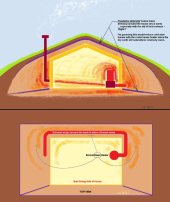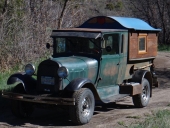I have a 1993 Dakota. I picked it after reading countless owner testimonies of the engines lasting well into the 3-400,000 mile range. The transmissions don't last quite that long, but the 318(5.2L V-8 ) engine has been produced by Dodge for longer than just about any other engine they make. The truck has more power than a 4 or 6 cyl Toyota, but doesn't guzzle nearly as bad it's larger V-8 brethren. It has an 1,800-2,000 lb. payload capacity with the V-8 and can haul up to a 6,400 lb trailer with the correct gears. Mine is the extended(club) cab. While bigger than the similar Toyota or Ford Ranger extended cabs, it isn't something you'd want to have to sit in if you're a full sized adult. The front seat on the other hand has room for days(I'm 6'0"-200 lbs.) For kids, dogs, groceries, or general stowage though, it works great. The bed is 6-1/2 feet IIRC so a full grown person can lay right down in it. A full 4x8 piece of plywood or drywall doesn't stick out much past the tailgate(down). My only gripe is the oil filter being in about the worst position you could possible imagine. If you change your own oil, be prepared to either buy a filter relocation kit and install it with your first filter change, or end up regretting that you didn't take my advice(seriously, it's that bad). Another truck I'd personally recommend is a Jeep Comanche. It's lighter(like a Toyota) but has an inline 6 cylinder engine which puts out an awesome amount of torque and horsepower. It's a tad light for serious farm type work, but it always gets a solid 20+ MPG and never seems to lack for power. The 4.0 motor also has a reputation for lasting well into the high 200's to low 300,000's of miles.






